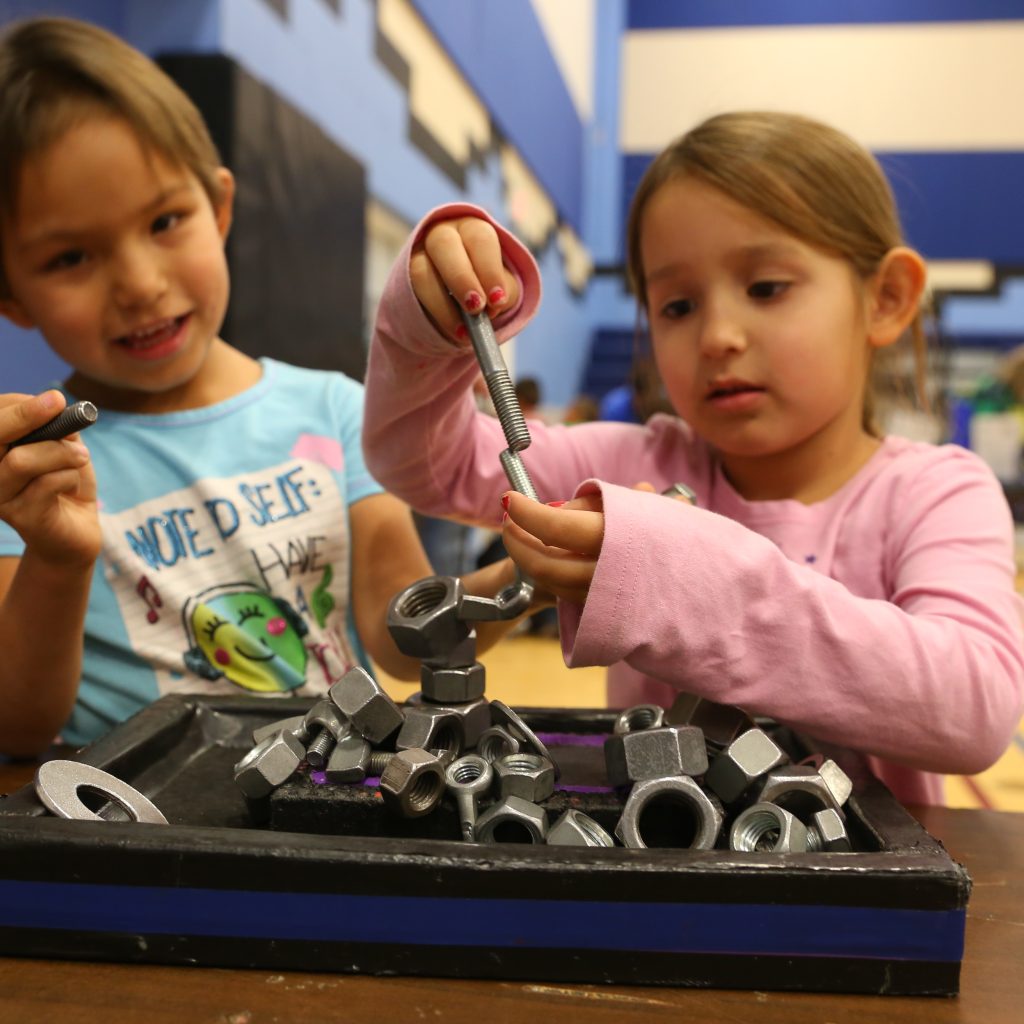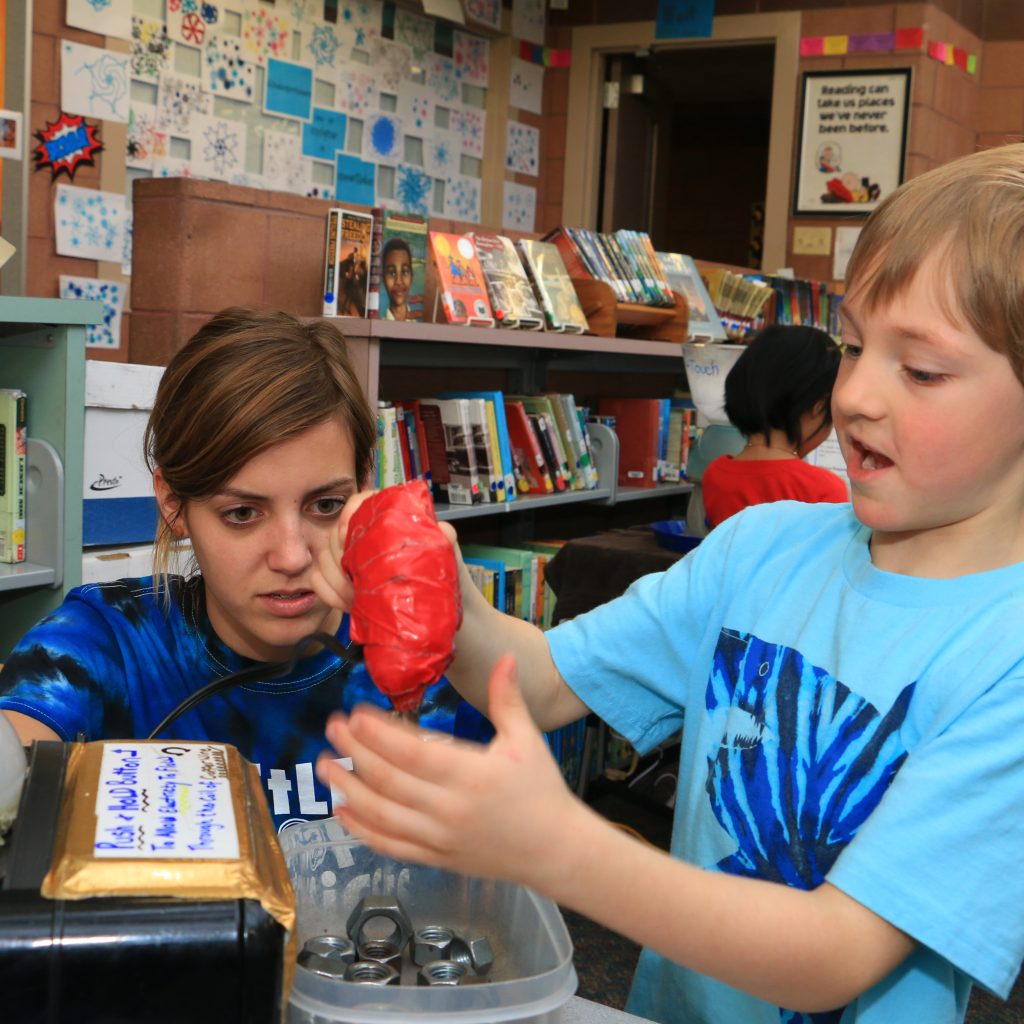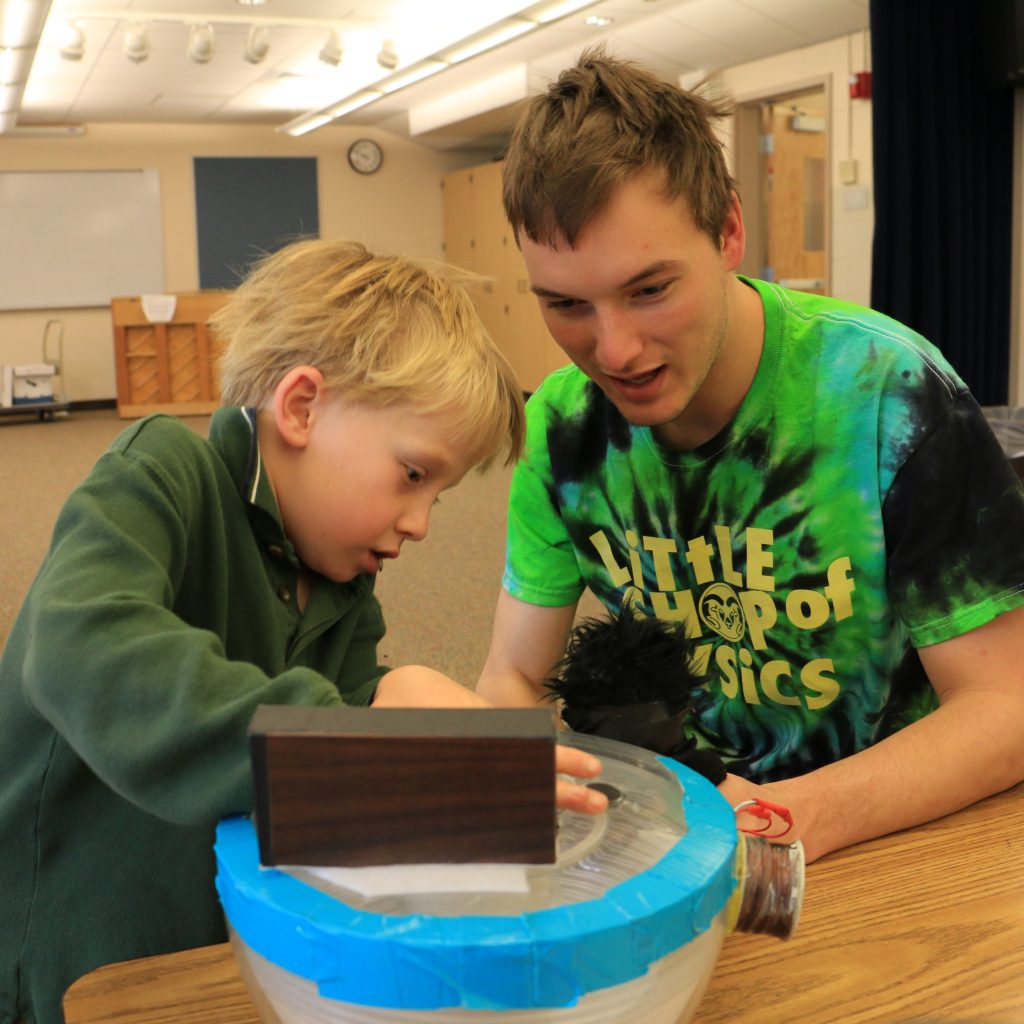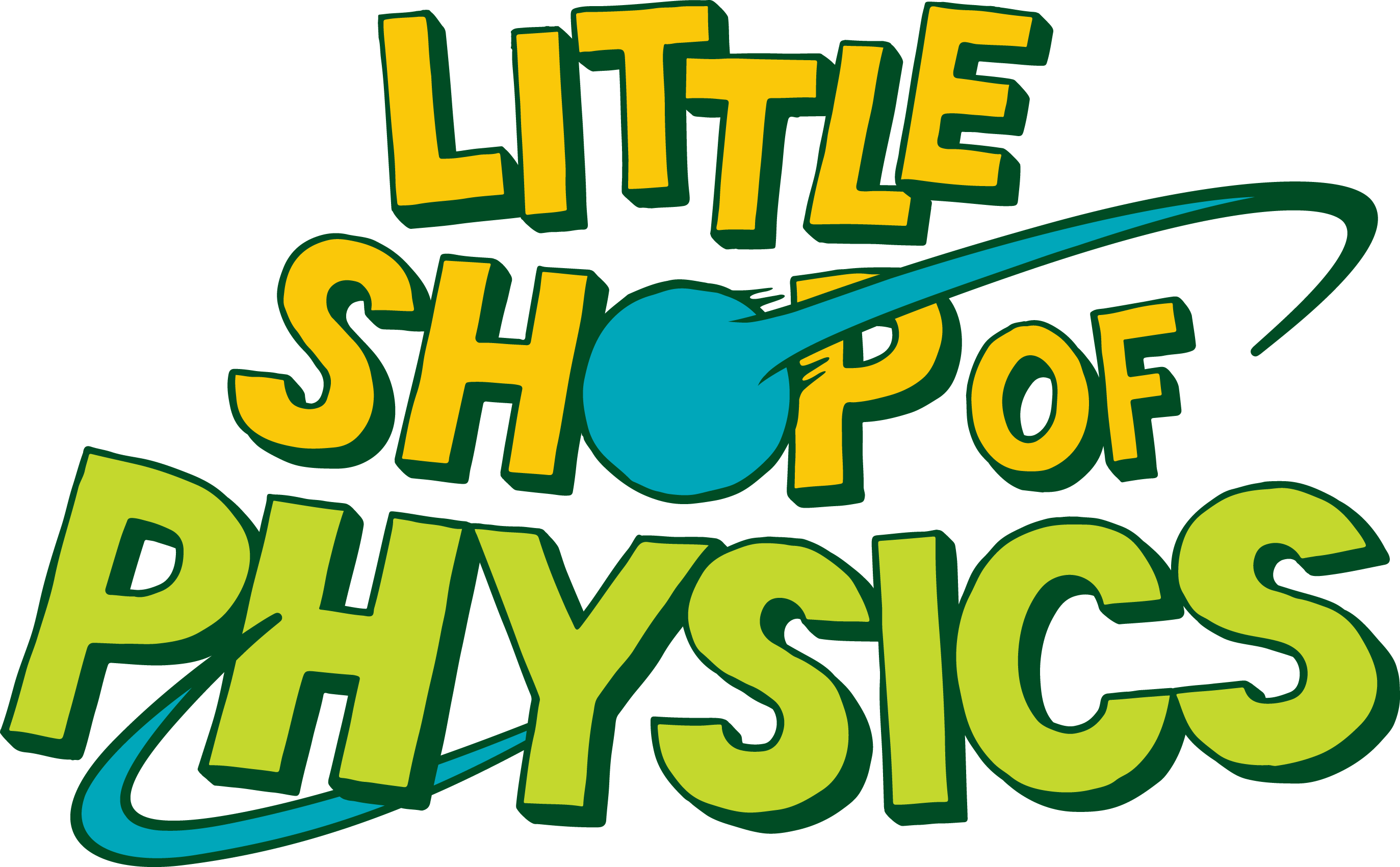Everything You Need to Know About Magnetism
You probably have magnets stuck to your refrigerator at home. But there are also magnets in the power plant that provides electricity to your home. What are those magnets up to, and how do they do what they do?
Theory
When you imagine a magnet, you may think of those floppy sheets holding your grocery list to your refrigerator, or a classic horseshoe. But what is a magnet? This is a tricky question to answer, but one that is amenable to elucidation by exploration and experimentation. In this section we’ll describe a few key features of magnets that will help you make sense of the resources presented below.
Magnets come in multiple flavors — there are permanent magnets, electromagnets, materials with induced magnetic moments… — but all of these share some common features: For one, they are all magnetic dipoles. Each has a north pole and a south pole. This is an intrinsic feature of magnets; there are no magnetic monopoles. If you cut a bar magnet perfectly in half, you’ll simply have two half-size magnets, each with a north pole and a south pole! As you (and perhaps your students!) already know, north poles repel north poles, and south poles repel south poles, but north and south poles are attracted to one another. Magnets interact with one another at distance via magnetic fields. The magnetic field is an alteration of the space around a magnet (or an electric current, as we’ll discuss later); the field can exert forces and do work.
Now, you might be wondering just what a magnet is. To answer this question, let’s take the atomic view. Electrons have magnetic moments — they behave like tiny magnets. In most materials, this property of electrons doesn’t come to much; the moments point every which way and cancel each other out. However, in ferromagnetic materials (such as iron), electrons tend to pull other electrons near them into magnetic alignment, resulting in regions (domains) with net magnetic moments. If the piece of iron is small enough, it may just have two domains: one north pole domain, one south. The iron is thus a permanent magnet.
This, however, begs the question: How do we make large magnets? These are often electromagnets, and understanding them will take a bit more background knowledge. It is a basic but fascinating truth that an electric current creates a magnetic field.* The magnetic field around a current — or around a permanent magnet, for that matter — can force domains that line up with the applied magnetic field to push back the bounds of domains that don’t. This expansion of favorably oriented domains gives the piece of iron as a whole an induced magnetic moment.
*A very important note: The reverse is also true! A changing magnetic field near a conductor can create an electric current in the conductor. This induced current of course creates its own magnetic field; the induced current goes in a direction such that its magnetic field (the induced field) opposes the change in the applied (external) field. Such electromagnetic induction is the basic principle at work in most generators.
Application
On this page we’ve gathered a variety of videos that center on the theme of magnetism, but serve different purposes. Some are very quick and simply present an interesting phenomena that will help you catch students’ attention. Others describe how to make projects that your students can experiment with as they start to form basic ideas about magnetism. Still others help you demonstrate phenomena and principles that might be tricky to do “live” in your classroom.
As such, we’ve organized the videos in terms of “the 5 E’s”: Engage, Explore, Explain, Extend, and Evaluate. This structure has worked well for us in teacher workshops, and we hope it works well for you too! However, we always welcome your feedback. Please contact us anytime to let us know what’s working, what’s not, and how we can make this resource more useful for you. Enjoy!
Engage
The purpose of the Engage segment is to pique students’ interest. We don’t need to directly transmit concepts at this stage, merely give students a chance to think and get excited about the topic we’ll be discussing.
Video 1: Quantum Levitation
Remember electromagnetic induction? Above, we discussed how important this phenomenon is in day-to-day life, but it leads to some pretty fascinating effects under more extreme conditions as well. A very special group of materials become superconductors when they are very cold: They can carry an electrical current with zero resistance (i.e., they don’t dissipate any of the energy of the electrons moving in the current). It makes sense, then, that moving a magnet around near a superconductor will induce an electrical current that just keeps on going — generating its own magnetic field in the process! But because the induced field always opposes the change in the applied field, this leads to some pretty magical-looking effects. In this video a superconducting puck doused in liquid nitrogen levitates, rides, and spins on a magnetic track — even upside-down!
Video 2: The World’s Simplest Motor
A battery’s raison d’être is generation of a voltage. Where there is a voltage, there is an electric field, and an electric field can push on charged particles. When you put a battery in a device, you complete a circuit within the device. The combination of complete circuit and electric field produces an electric current — a flow of charges. As we noted earlier, a current also produces a magnetic field, so if a current is near a magnet, the two can interact. In this video, we co-opt this interaction to make a very simple motor out of a battery, a wire, a screw, and a magnet.
Explore
In the explore segment, students get to experience firsthand the principles we hope to teach them. We still don’t need to explicitly describe any concepts yet — the students will start working these out as they explore.
Video 1: Magnetic Line Dancing
You’ve likely seen (or done!) a classic magnet demonstration using iron filings. Scatter some filings on a sheet of paper, place a bar magnet underneath, and watch the filings orient themselves in the magnetic field lines. In this video we show you how to take things up a notch using a lazy Susan. Allowing students to rotate a magnet under a container of iron filings lets them explore not only ferromagnetism (as discussed above), but the basic nature of the magnet’s field. The field is intrinsic to the magnet; the field moves with the magnet and always has the same effect on whatever filings happen to be above a certain spot on the magnet. This approach also emphasizes the 3D nature of the magnetic field — something that’s not always clear on paper!
Video 2: MagNuts
This is a lovely and tactile exploration of ferromagnetism (as discussed above). Nuts and bolts made of steel (a ferromagnetic material) are magnetized by a large permanent magnet. This project is very easy to build, and great for open-ended exploration. As students test things out, they can even make some semi-quantitative observations: How far from the magnet do you have to be before you don’t feel it pull on the bolt any more? If you hold a bolt above the magnet, how many other bolts (nuts; you may need to adjust a bit for weight) can stick to it? Do they stick if you move them away from the magnet? How far away can you get from the magnet before they stop sticking? (The nuts and bolts may remain magnetized and thus continue to stick after you move away from the magnet. However, if you drop them, their magnetic domains will re-randomize, and they will no longer stick to one another.)
Note: If it’s tricky for you to acquire the materials described in the video, or you just prefer smaller-scale experiments for your class, you can achieve much the same effect with a small rare-earth disk magnet (we like neodymium) and paperclips (which are typically made of steel). As a bonus, you can do some cool investigations by trying to get the paperclips to stand up in the magnetic field lines.
Video 3: Horseshoe Magnet
A tutorial on construction of a classic electromagnet (as discussed above). Recall that electric currents create magnetic fields. It turns out that the magnetic field inside a coil of current-carrying wire is particularly strong, so if you put an iron object — such as a horseshoe — inside a coil of current-carrying wire, you cause significant growth of the magnetic domains that align with the field. This turns the horseshoe into quite an impressive magnet!
Explain
Now it’s time to codify and formalize the students’ observations. The following videos can help you elucidate and demonstrate the basic concepts underlying the discoveries students made as they explored.
Video 1: Magnetism Part 2
This excerpt from the EveryDay Science show is an introduction to and investigation of magnetic poles. North poles repel other north poles, south poles repel other south poles, but opposite poles attract. Where have you seen this before? Compasses! A compass is a tiny magnet that lines its poles up with the magnetic field of the earth. (An interesting aside worthy of consideration: The fact that the north pole of the compass magnet points toward “north” indicates that the earth’s geographic north pole is a magnetic south pole! The magnetic pole structure of the earth flips every so often — nobody is quite sure why — and we seem to be heading for a reversal right now.)
Video 2: Magnetism Part 6
Students who worked with the horseshoe magnet know that there’s a strong magnetic field inside a coil of current-carrying wire (this is what makes the horseshoe a magnet — specifically, an electromagnet). However, the magnetic field inside the coil exists whether or not the horseshoe is there! This video uses a solenoid (an elongated coil of current-carrying wire) to elucidate the inextricable relationship between electric currents and magnetic fields.
Video 3: Magnetism Part 7
In the second Engage video, students saw that a magnetic field can push on (exert a force on) a current-carrying wire. This video extends that concept using an old television set. Before LCD technology, pictures were drawn on television screens by beams of very, very fast-moving electrons. A current is just a flow of electrons, so it follows that a magnet should be able to affect the picture on one of these old television sets by pushing on the electrons inside — and indeed it can! To solidify the connection to what students saw in the Engage video, we also see a second version of the simple motor presented there.
Extend
Once the basic principles are clear, we want to encourage students to expand their thinking and ask questions that go beyond the scope of what we’ve already discussed.
Video 1: Photon of the Opera
We briefly discussed electromagnetic induction as a footnote to the Theory section. However, this fascinating and vitally important phenomenon deserves more of our attention! This video is a brief tutorial on how to make a simple human-powered generator using a salad spinner, a small solenoid, mini light bulbs (or something else you might like to try to power…) and magnets. Recall that, as an electric current creates a magnetic field, a changing magnetic field can create (induce) an electric current. As magnets stuck to the inner basket of the salad spinner pass the solenoid, they create a changing magnetic field inside the solenoid. An electric current is thus induced in the solenoid, such that its own field opposes the changes in the applied field. We attach the mini light bulbs to the solenoid, and use this current to light them.
Video 2: Magnetism Part 9
An excerpt of the EveryDay Science show demonstrating more experiments with electromagnetic induction, and a bit more formal explanation. There’s also a nice connection to the importance of induction for everyday life — the utility that directly supplies your electricity most likely uses induction to create the current that powers your home! Inside the power plant are magnets rotating (perhaps turned by electricity generated elsewhere, or by flowing water, or by wind) inside loops of wire. The rotation results in a changing magnetic field, so, as we know, there is a current induced in the loop. Eventually, the current reaches the wall sockets in your house.
Evaluate
It’s important to figure out what students understand after the first four E’s. Tests and quizzes are one option, but there are many others.
This one is up to you — what works best for you and your students? We, for example, have had good results with turning the tables and letting the students make a video at this stage. We’d love to hear what works in your classroom!









